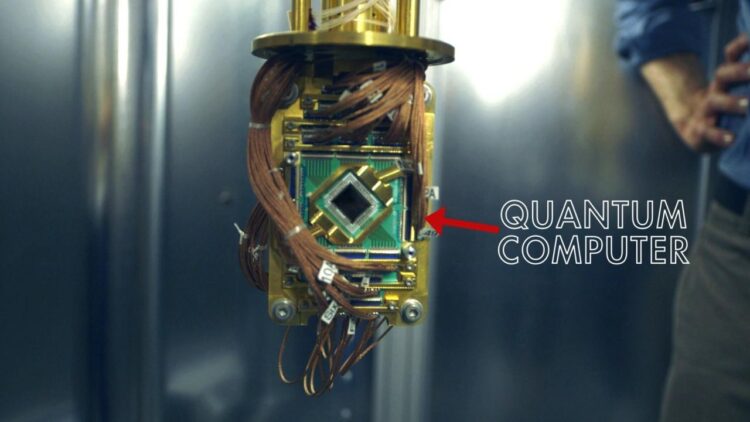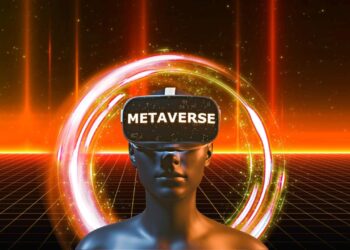For the past half-century, the relentless march of classical computing, as predicted by Moore’s Law, has reshaped our world. It has given us everything from the smartphone in our pocket to the vast data centers that power our global economy. But even these supercomputers, for all their power, have limits. They struggle with problems of immense complexity, the kind of challenges found in molecular simulation, financial modeling, and the very fabric of cryptography. Today, we stand at the precipice of a new computational epoch, one that doesn’t just improve upon the old rules but rewrites the laws of physics to solve the unsolvable. This is the era of quantum computing.
Once relegated to the chalkboards of theoretical physicists and the cryogenic chambers of research labs, quantum computing is breaking new ground at a breathtaking pace. The theoretical is rapidly becoming tangible. Recent breakthroughs are not merely incremental steps forward; they represent fundamental leaps that are pushing this revolutionary technology out of the laboratory and into the realm of practical, world-changing application. We are moving beyond the question of “if” and into the reality of “how” and “when” quantum computers will tackle some of humanity’s most formidable challenges.
This comprehensive exploration will journey to the cutting edge of this technological frontier. We will demystify the core principles that give quantum computers their almost unbelievable power, dive deep into the recent breakthroughs that have overcome decades-old obstacles, and examine the emerging real-world applications that are set to disrupt entire industries. The dawn of the quantum age is here, and it promises to reshape our future in ways we are only just beginning to imagine.
The Quantum Realm: A Primer on Unrivaled Power
To understand why quantum computing is so revolutionary, one must first grasp how it fundamentally differs from the classical computers we use every day. A classical computer uses “bits” as its basic unit of information, which can exist in one of two states: a 0 or a 1. A quantum computer, however, uses a “qubit,” which operates on the surreal, counterintuitive principles of quantum mechanics.
- A. The Qubit and Superposition: A qubit is the heart of the quantum computer’s power. Unlike a classical bit, a qubit can exist as a 0, a 1, or both at the same time. This bizarre state is called superposition. Imagine a spinning coin; while it’s in the air, it’s neither heads nor tails but a blend of both possibilities. A qubit is similar. This ability to exist in multiple states at once allows a quantum computer to process a vast number of calculations simultaneously. Two qubits can represent four states at once, three can represent eight, and so on. This exponential growth in processing power is what sets quantum computers apart. A machine with just 300 qubits could, in theory, represent more states than there are atoms in the observable universe.
- B. Entanglement: A “Spooky” Connection: The second key principle is entanglement. This is a phenomenon Albert Einstein famously called “spooky action at a distance.” When two qubits are entangled, their fates become intrinsically linked, no matter how far apart they are. Measuring the state of one qubit (observing it as a 0 or 1) instantly influences the state of the other. This interconnectedness allows for the creation of highly complex computational states and enables sophisticated algorithms, effectively allowing the qubits to work together in a perfectly correlated harmony that dramatically amplifies the computer’s overall power.
- C. The True Goal: Quantum Advantage: For years, the benchmark was “quantum supremacy,” the point where a quantum computer could perform any task, even a useless one, faster than the best supercomputer. While an important milestone, the industry’s focus has now shifted to the more practical goal of quantum advantage. This is the critical inflection point where a quantum computer can solve a real-world, commercially relevant problem significantly faster, more accurately, or more efficiently than any classical computer ever could. Recent breakthroughs suggest we are on the cusp of achieving this in several key areas.
The Grand Challenge: Taming Quantum Decoherence
The immense power of qubits comes at a cost: they are incredibly fragile. The quantum states of superposition and entanglement are delicate and easily disturbed by the slightest interaction with the outside world—a stray magnetic field, a tiny vibration, or a minute temperature fluctuation. This loss of quantum state is called decoherence, and it is the single greatest enemy of quantum computing. For decades, the challenge of protecting qubits from decoherence, extending their “coherence times,” and correcting the errors that inevitably arise has been the primary focus of researchers worldwide.
Recent breakthroughs in this area are the primary reason for the current explosion of optimism. Scientists and engineers are making monumental strides in creating more stable and reliable quantum systems. This involves innovations in building better physical qubits using new materials and architectures, such as topological qubits, which have built-in protection against noise. It also involves creating ultra-stable environments, shielding the quantum processors in elaborate cryogenic refrigerators that are colder than deep space.
Perhaps the most significant advance has been in the field of quantum error correction (QEC). Since it’s impossible to eliminate all environmental noise, the solution is to manage the errors it causes. QEC works by using multiple physical qubits to encode the information of a single, more robust “logical qubit.” Think of it as having multiple people check a mathematical calculation to ensure the final answer is correct. By constantly monitoring the physical qubits for errors and correcting them without disturbing the underlying quantum computation, researchers can create a logical qubit that is far more stable than any of its individual components. Recent experiments in late 2024 and 2025 have, for the first time, demonstrated logical qubits that have a lower error rate than the physical qubits they are made from—a watershed moment that signals the dawn of truly fault-tolerant quantum computing.
2025 Breakthroughs: Redefining the Boundaries of Possible

The last year has seen a cascade of breakthroughs that are turning the theoretical promises of quantum computing into demonstrable engineering reality. These are not minor tweaks but foundational shifts that are accelerating the timeline toward quantum advantage.
- A. The Dawn of the Logical Qubit Era: The achievement of creating and operating a high-fidelity, error-corrected logical qubit is the most important breakthrough of the modern quantum era. Tech giants like Google and IBM, alongside innovative startups, have published landmark papers demonstrating systems where multiple physical qubits work in concert to protect a single unit of quantum information. This proves that quantum error correction is not just a theory but a viable engineering pathway. It is the key that unlocks the door to scaling up from today’s noisy, intermediate-scale quantum (NISQ) devices to the large-scale, fault-tolerant machines of the future.
- B. Beyond Shor’s: The Discovery of New Quantum Algorithms: For a long time, the poster children for quantum algorithms were Shor’s algorithm (for breaking encryption) and Grover’s algorithm (for searching databases). While revolutionary, their applications are specific. A major breakthrough has been the recent development and testing of a new class of algorithms tailored for specific, high-value industrial problems. These include advanced quantum machine learning (QML) algorithms for pattern recognition in massive datasets and highly efficient variational quantum eigensolvers (VQEs) designed specifically for simulating molecular interactions for drug discovery and materials science.
- C. The Rise of Application-Specific Quantum Processors: The industry is recognizing that a one-size-fits-all approach may not be the fastest path to quantum advantage. A significant trend is the development of quantum processors designed for a single purpose. Rather than building a universal quantum computer, companies are creating specialized devices, such as a “quantum simulator” built exclusively to model molecular behavior or a “quantum optimizer” for solving complex logistics and financial problems. This approach allows for the hardware to be fine-tuned to the problem at hand, dramatically increasing performance and bringing practical applications within reach much sooner.
- D. Networking Qubits for a Quantum Internet: Significant progress has been made in entangling qubits over increasingly long distances using fiber optic cables. This is the foundational technology for a future “quantum internet.” Such a network would not only allow for unbreakably secure communication but would also enable distributed quantum computing, where multiple smaller quantum processors could be linked together to tackle problems of even greater complexity. Recent experiments have successfully demonstrated sustained entanglement between quantum nodes in different buildings, a critical step towards this futuristic network.
Real-World Impact: Where Quantum Will Change Everything
The convergence of these breakthroughs is moving quantum computing into applications that will have a profound impact on science, industry, and society.
- A. Drug Discovery and Materials Science: One of the most promising near-term applications is in the simulation of molecules. Classical computers struggle to accurately model the quantum interactions within complex molecules, which is why drug discovery is often a process of trial and error. Quantum computers can simulate these interactions with perfect fidelity. This will allow pharmaceutical companies to design new, highly effective drugs from the ground up, create novel catalysts for clean energy, and develop revolutionary materials for everything from batteries to solar panels.
- B. Finance and Optimization: The world of finance is built on complex optimization problems, such as portfolio management, risk assessment, and algorithmic trading. Quantum algorithms are uniquely suited to exploring a vast number of potential solutions simultaneously, finding the optimal strategy far faster than any classical machine. This could lead to more stable and efficient financial markets and unlock new investment strategies.
- C. The Looming Cryptographic Threat: The same power that makes quantum computers revolutionary also makes them a threat. Shor’s algorithm, when run on a sufficiently large quantum computer, will be able to break most of the public-key encryption that protects our digital world—from online banking and e-commerce to government communications. This has sparked a global race among cryptographers to develop and standardize post-quantum cryptography (PQC), a new generation of encryption algorithms that are resistant to attacks from both classical and quantum computers.
A New Chapter in Human Innovation

The era of quantum computing is no longer a distant vision. The breakthroughs in qubit stability, error correction, and algorithm development have laid a practical foundation for building machines that can solve real-world problems. While the dream of a universal, fault-tolerant quantum computer is still on the horizon, the age of quantum advantage is dawning now. Through specialized processors and hybrid quantum-classical approaches, we are beginning to harness the fundamental laws of the universe to drive innovation.
This technology will be the engine behind the next generation of scientific discovery, industrial optimization, and technological advancement. From designing life-saving medicines to building a more secure global internet, quantum computing is poised to become one of the most transformative technologies in human history, opening up a new chapter in our ability to understand and shape the world around us.












